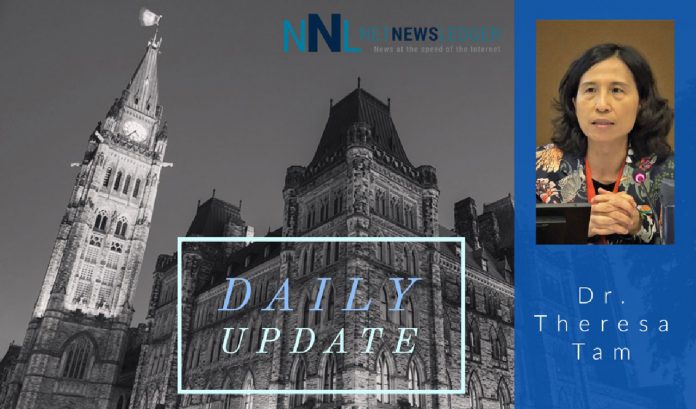Ottawa – It is Canada Day and after months of collective efforts to reduce COVID-19 activity levels and increase first and second dose COVID-19 vaccine coverage, we can all have a sense of pride in having supported each other. While we continue to make great progress with more than 36 million doses of vaccine administered by provinces and territories to date, precautions are still needed as immunity builds up further across our communities. As well, COVID-19 activity varies, so it is important to continue following local public health advice, including adhering to gathering size limits and other public health measures, such as mask wearing and physical distancing in public spaces. To support you in making informed decisions to lower your risks when going out and/or attending public events, I encourage you to refer to the new guidance on Life After Vaccination, including an infographic for quick reference when considering risks of different activities and settings. As well, the My COVID-19 Visit Risk Calculator can assist you in considering individualized risks based on factors such as personal and family health, vaccination status and setting safety. Wherever you spend your day, I wish you a happy and safe Canada Day.
As COVID-19 activity declines in Canada, we are continuing to track key epidemiological indicators to monitor trends and quickly detect emerging issues of concern, including to better understand the impact of circulating virus variants. The Public Health Agency of Canada is also providing regular updates on COVID-19 vaccines administered, vaccination coverage and ongoing monitoring of vaccine safety across the country. The following is the latest summary on national numbers and trends.
Since the start of the pandemic, there have been 1,414,736 cases of COVID-19 and 26,273 deaths reported in Canada; these cumulative numbers tell us about the overall burden of COVID-19 illness to date. Variants of concern (VOCs)represent the majority of recently reported COVID-19 cases across the country. While the Alpha variant continues to account for the majority of genetically sequenced variants in some areas of Canada, four VOCs (B.1.1.7 (Alpha), B.1.351 (Beta), P.1 (Gamma), and B.1.617.2 (Delta)) have been detected in most provinces and territories. More recently, the Delta variant has been increasing and now accounts for the majority of current COVID-19 cases in other areas, such as in Ontario. Nevertheless, we know that vaccination, in combination with public health and individual measures, are working to reduce spread of COVID-19.
The latest national-level data show a continued downward trend in disease activity with an average of 635 cases reported daily during the latest 7 day period (June 23-29), down 26% compared to the week prior. Likewise, the overall number of people experiencing severe and critical illness is also steadily declining. Provincial and territorial data indicate that an average of 959 people with COVID-19 were being treated in Canadian hospitals each day during the most recent 7-day period (June 23-29), which is 20% fewer than last week. This includes, on average 473 people who were being treated in intensive care units (ICU), 15% fewer than last week. Likewise, the latest 7-day average of 14 deaths reported daily (June 23-29) is continuing to decline, showing a 19% decrease compared to the week prior. Note, today’s 7-day moving averages for cases and deaths exclude 90 cases and 19 deaths that occurred in previous months but were only reported yesterday following completion of data review and investigations.
With the ongoing expansion of vaccine eligibility, the administration of first and second doses of COVID-19 vaccines is continuing at an accelerated pace across the country and there is increasing optimism that widespread, stronger and longer lasting immunity can be achieved by fully vaccinating a high proportion of Canadians. For more information regarding the risks and benefits of vaccination, I encourage Canadians to reach out to your local public health authorities, healthcare provider, or other trusted and credible sources, such as Canada.ca and Immunize.ca.
While COVID-19 is still circulating in Canada and internationally, core public health measures and individual protective practices can help us to reduce the spread: stay home/self-isolate if you have symptoms; be aware of risks associated with different settings; avoid all non-essential travel; and maintain individual protective practices such as physical distancing and wearing a well-fitted and properly worn face mask, as appropriate.
Canadians can also go the extra mile by sharing credible information on COVID-19 risks and prevention practices and measures to reduce COVID-19 in communities. Read my backgrounder to access more COVID-19 Information and Resources on ways to reduce the risks and protect yourself and others, including information on COVID-19 vaccination.
SOURCE Public Health Agency of Canada








